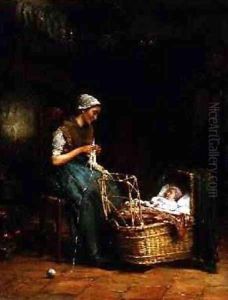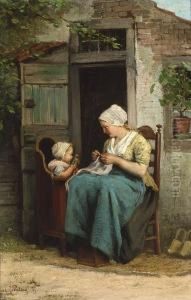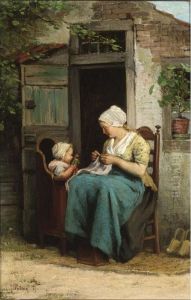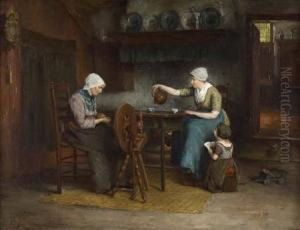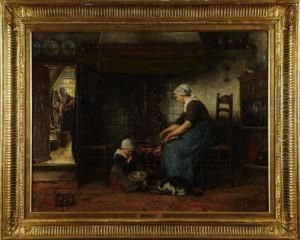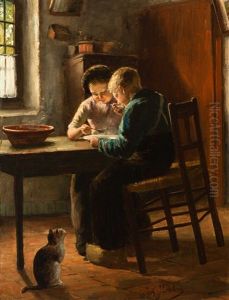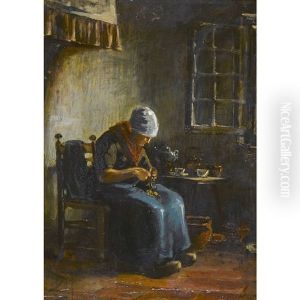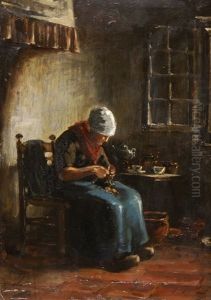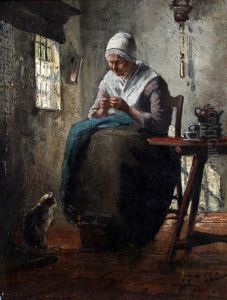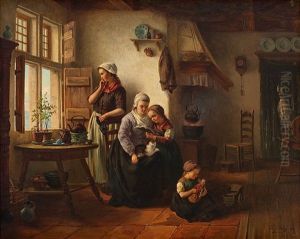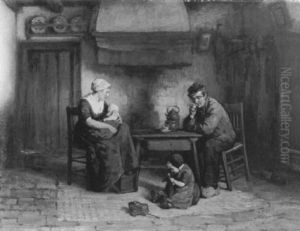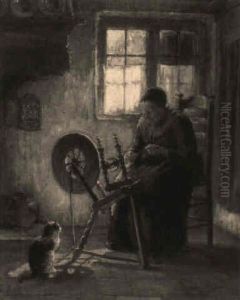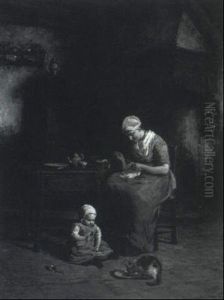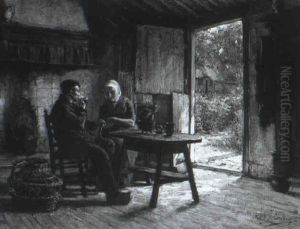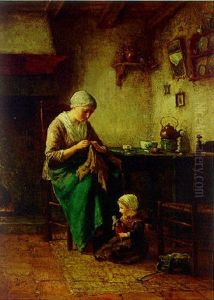Johannes Jacobus Paling Paintings
Johannes Jacobus Paling, a Dutch artist born on December 24, 1885, in Rotterdam, Netherlands, was known for his landscape paintings and watercolors. Though not as widely recognized as some of his contemporaries, Paling's work reflects the Dutch tradition of landscape painting and showcases his affinity with nature and rural scenes.
Paling's early life was steeped in the rich cultural heritage of the Netherlands, a country with a long-standing tradition in the visual arts, dating back to the Dutch Golden Age. He developed his artistic skills in an era when many Dutch artists were influenced by movements such as Impressionism and later by Modernist tendencies. However, Paling maintained a more traditional approach, focusing on the serene beauty of the Dutch countryside.
As an artist, Paling was particularly adept at capturing the changing light and seasons within his landscapes. His paintings often depicted the flat, low-lying areas of the Netherlands, with wide skies and waterways, characteristic of the Dutch polder landscape. He was also known to include figures and animals in his compositions, adding a human element to the natural settings. His style was realistic with a softness of tone and color that conveyed a sense of tranquility.
Despite the quality of his work, Johannes Jacobus Paling did not achieve the fame of some of his peers. His art was appreciated more on a local or national level rather than an international scale. Nevertheless, his paintings still found their way into the collections of Dutch art enthusiasts and regional museums, contributing to the cultural tapestry of the Netherlands.
Paling's career spanned several decades, during which he witnessed significant historical events, including both World Wars, which affected Europe profoundly. Yet, through his art, Paling provided a consistent vision of the peaceful Dutch landscape, perhaps offering a form of solace amidst turbulent times.
Johannes Jacobus Paling passed away on January 13, 1955, in Hilversum, Netherlands. His body of work continues to be a testament to his dedication to capturing the essence of the Dutch landscape and serves as a window into the pastoral beauty of early to mid-20th-century Netherlands.
